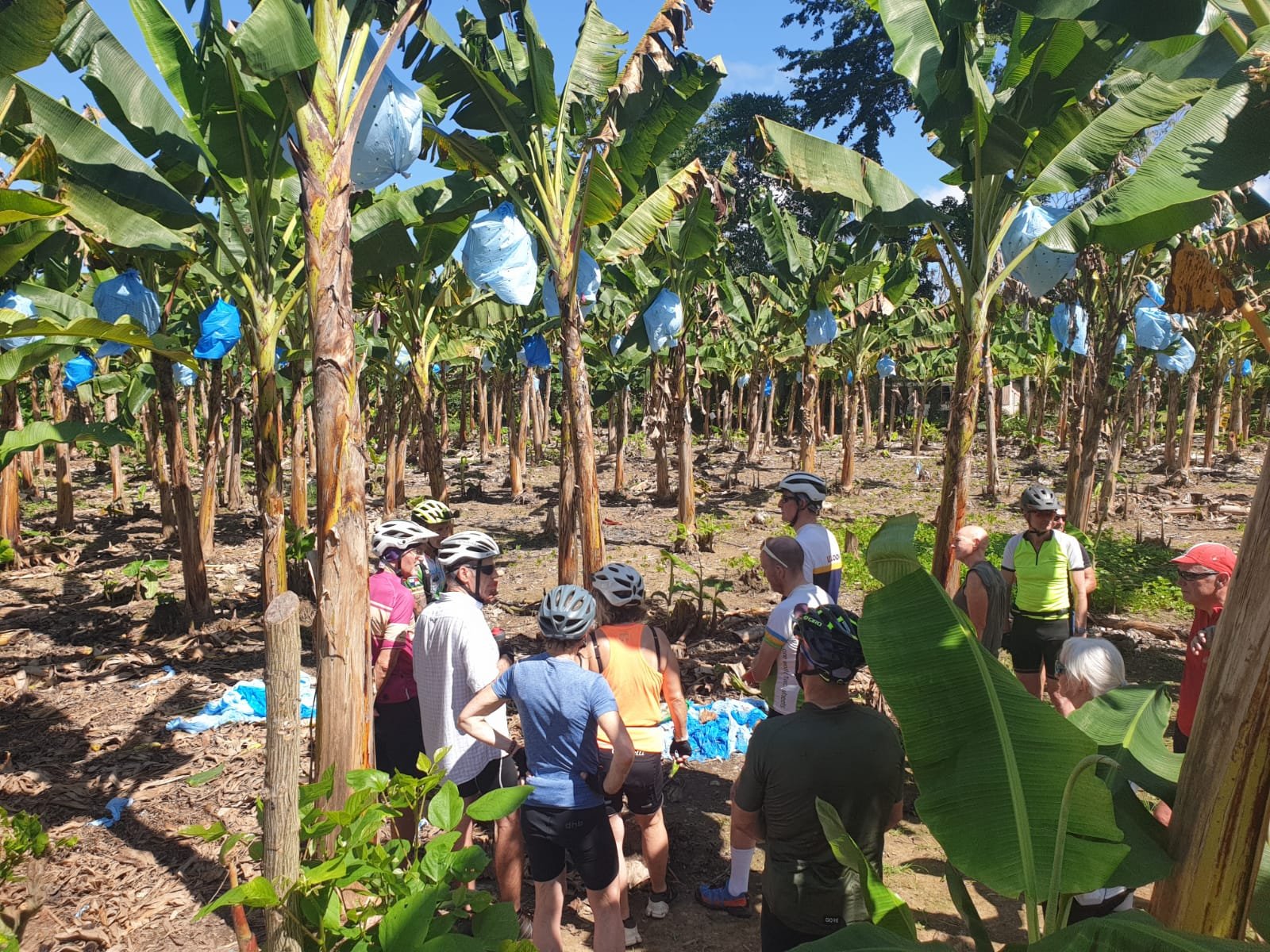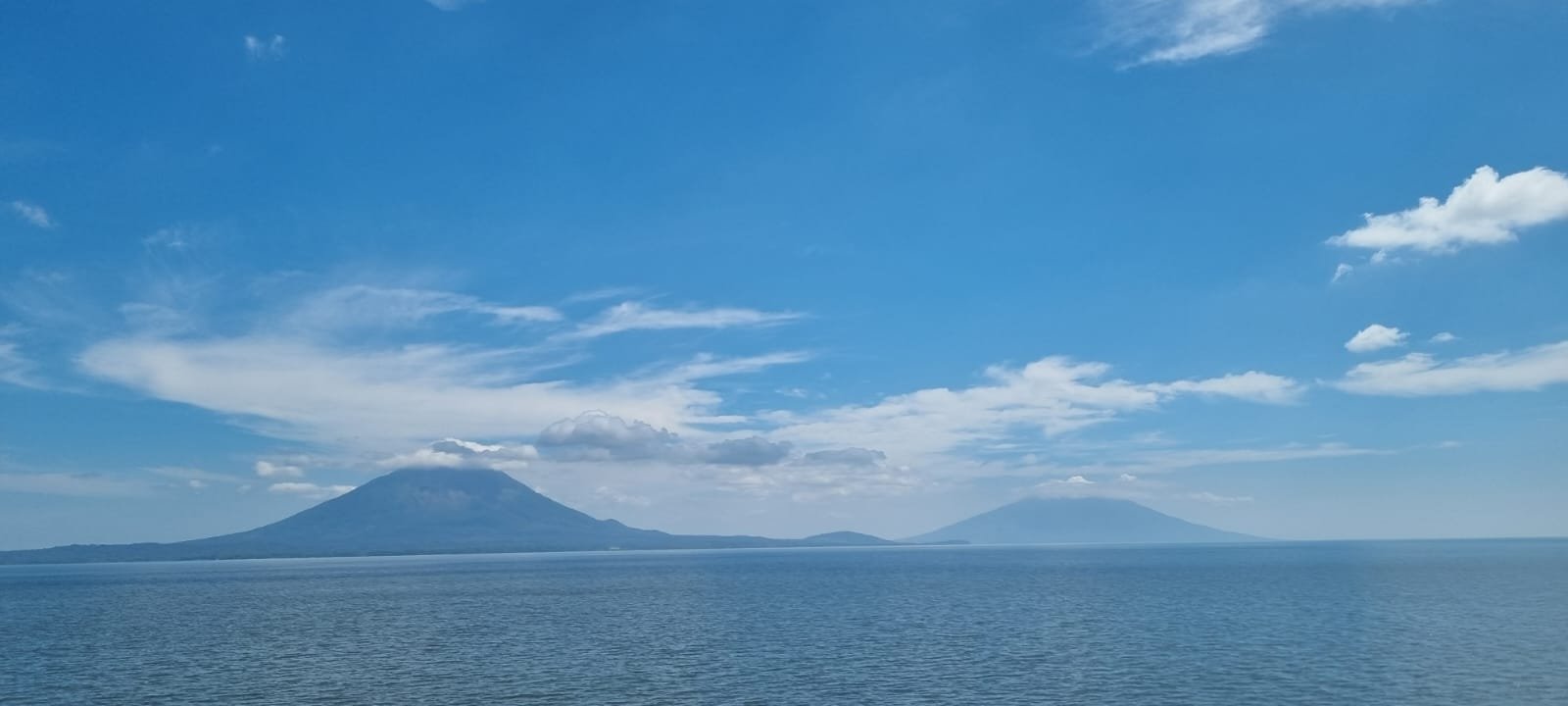Central America by Bicycle with Exodus Adventure Travel!
“Fancy cycling for a couple of weeks in Central America early next year?” my mate Nigel asked last autumn. I was only just back from seven weeks in France following England’s progress in the Rugby World Cup, but it didn’t take long to reply. “Sounds interesting. When exactly?” “Start of February,” he replied.
Escaping our British shores and skipping a good chunk of one of the worst months for cold and awful weather on the calendar; and travelling somewhere tropical and exotic sounded a decent plan.
It transpired that we had to commit quickly as the travel company, Exodus, were offering a 20% discount as part of their fiftieth birthday celebrations, and this expired soon. The company had carved a niche in small-group adventure travel and had swept up oodles of travel industry awards for their brilliantly curated expeditions.
After a brief one-night stopover in Miami, where I particularly enjoyed the warm sunshine, the vast expanse of sand and sea and the Art déco vibe of Miami Beach, we flew further west and south to Managua, the capital of Nicaragua. The bulk of the group were flying in later,but we were identified with a chap holding a card with our names on it before he took us out to a battered old taxi cab for the hour’s drive to Granada.
The group, thirteen of us, all met up over breakfast the next morning as the rest of the crew were late arriving the previous night. Gerhard, an amiable Costa Rican of German extraction,was our Group Leader. Personable, fit-looking and in his late forties, he introduced himself to us and told us something about the programme. It would be full on with some significant cycling challenges but with opportunities to have some downtime, immerse ourselves into the Central American way of life and learn something of the geography, history, politics, and culture of the three countries we would be visiting. And, of course, sample some of the local cuisine and check out their beer and wine offerings.
This Sunday morning gave us a gentle introduction to the trip as we were allocated our bicycles. These, all set up for our various heights, labelled with our names and in tip-top nick,were stored in a spacious building to the side of reception. This storage room formed part of the characterful, colonial-style, family-owned hotel, which was our base for two nights.
We rode out through town and were soon pedalling around the shores of the massive Lake Nicaragua, the largest in Central America. It was lovely to see all the locals strolling in the sunshine, firing up barbeques, eating ice-creams or taking part in open-air church services. Little children with their ready smiles and constant “holas” seemed delighted to see us and waved enthusiastically as we rode by.
We could see some of the many active and dormant volcanoes the region is renowned for in the distance as we rode along reasonably flat dirt roads. Later, stopping for a beautiful lakeside lunch, we could relax and appreciate the scenery even more as we ordered our food. While the meals were being prepared, we took a short boat ride on the lake and around the myriad of tiny islands, formed from volcanic material resulting from a major eruption of the Mombacha volcano. Many of these were inhabited by local subsistence fishing families or else used as holiday homes by the wealthier set. We saw our first wild monkeys (spider monkeys and the white-faced variety) and, with Gerhard’s help, identified many native birds, such as ospreys, kingfishers, vultures and large egrets.
The timing was such that on our return, our food arrived swiftly. I enjoyed the ceviche, raw citrus-cured fish immensely.
After our ride back to our Granada base, we were off on the tour bus to see the magnificent crater lake of Apoyo from a spectacular viewpoint high above, before timing our arrival at dusk at Masaya National Park close by. Here we could peer through the acrid and sulphurous fumes to see glowing orange-red lava forty metres below us. Mesmerising. The rock melts at a colossal 900 degrees centigrade.
Over the next few days, the riding became more challenging, with some steep gradients and scorching tropical temperatures. First, we visited Ometepe island formed of two volcanoes, Concepcion and Maderas and rode up through the middle of both, before doubling back to our hotel, which was on the lakeside amid the verdant jungle.
Ometepe Island on Lake Nicaragua
A highlight of Ometepe to me was being woken up at dawn the next day by a quite incredible noise. We could not work the sound out, but it certainly made for an effective alarm call. Howler monkeys are the loudest land animals in the New World, we later learned. They certainly made an impressive racket.
After another day of cycling in Nicaragua, it was time to visit Gerhard’s home country of Costa Rica. He was engaging, passionate and knowledgeable as he spoke of the country of his birth. It was noticeable, with the quality of the road infrastructure, the houses and the smarter cars, that Costa Rica was wealthier than its northern neighbour.
As well as cycling over the next few days, we also enjoyed a river rafting trip. This was not the full-on white water descent, as the watercourses were not in flood this time of the year. Rather, it was an opportunity to drift slowly down the Tenorio River and, with the help of our excellent local guides, see iguanas, bats, snakes, various types of monkeys and even exceptionally well-disguised crocodiles. There were also many tropical birds to spot.
Cycling was also on the back burner when we entered Panama at the scruffy, hot and dusty border crossing at Sixaola. Having smoothly cleared customs, which involved walking across the bridge over the Sixaola River, we were off on the new tour bus with different bikes on topto Almira. At this small port, we embarked on a very fast and very wet speedboat ride for an hour to the island of Bocas del Toro, known by everyone as Bocas.
Once ensconced in the delightful hotel, the oldest building in the settlement and formerly the headquarters of a major fruit company, we were off exploring and finding somewhere to relax with a cold beer. We had a free day the next day so could rest our aching, and in my case, as the result of a crash, slightly battered bodies, so we all were a little de-mob happy.
Bocas had a range of colourful waterfront hostelries and restaurants, and the dusty potholed main street was flanked by wooden century-old buildings with attractive first-floor balconies. It all reminded me of places seen in old cowboy films on television, and I could imagine Clint Eastwood, a lone stranger, riding into town and there being a dramatic gunfight outside of the saloon. The place was a treat for all the senses, with reggae music being pumped out of massive speakers and intriguing aromas wafting over from street food sizzling on rudimentary grills.
At our vantage point, we watched water taxis flitting here and there, dropping revellers at their chosen venues for the evening. Even as darkness descended, the traffic continued without help from any lighting.
Most of the group met up randomly at La Pescaderia and enjoyed a long evening meal and a few drinks, with time for leisurely chats.
A snorkelling trip and visit to Red Frog Island, a protected nature reserve and upmarket resort with a stunning arc of soft golden sand, was on the cards the next day. We were certainly packing a lot into our Central American adventure.
Sunrise over the Caribbean on Bocas
The next day we were heading off from the Caribbean to the Pacific side of the country, so a few of us witnessed the sun come up in Bocas and then at the opposite of the day sink slowly and spectacularly into the Pacific.
Our ride that day was split into two sections, the first being through a rural undulating area of occasional basic wooden and tin-roofed homesteads, many displaying fences festooned with multicoloured items of clothing drying in the wind. The area was populated by indigenous peoples who used to practise a ‘slash and burn’ type of agriculture but now favour more permanent habitation.
We were cycling through hot, humid, tropical forests of dense green foliage with a vast array of spectacular trees, ferns, palms and grasses.
We could then take a break as the bus took us up to the top of the Continental Divide after crossing a dam over a reservoir rising to where we could see Panama’s highest peak, Volcan Baru, at 3,475m. The dormant volcano last erupted in 1550.
The sky and the air were clearer and less humid at this height. After the bikes were unloaded,we were off on a long sinuous 1,000m descent to the Pacific coastline.
The road surface was in excellent condition, but the bends were often tight and with very strong, 30mph, crosswinds we had to concentrate hard not to be blown off course. However,it was exhilarating as we drew closer and closer to the Pacific coast.
Our arrival at the excellent Las Lajas Beach Resort was perfectly timed to enable us to book in, dump our bags and cross the road to the wonderful stretch of sand and sparkling white surf crashing into the shore. Before long, the vast majority of us were enjoying this taste of the Pacific, and frolicking in the briny waves.
Within an hour, the tropical night fell, and we sat around the outdoor bar admiring the spectacular sunset, listening to the waves, sipping cold drinks and watching geckoes skilfully catching bugs.
The next day we were on the road early, but it was already 30 degrees at 9 am. The hilly route was possibly tougher than expected, and when the first water and fruit break came, it was most welcome. This was at the top of a particularly nasty climb, and we could see former dictator Noriega’s luxury island retreat he had commissioned and which he had shared with a notorious prison he had also sanctioned to be built.
When the day’s ‘challenging’ (Gerhard’s description) ride was over, it was all into the bus for the transfer to Panama City, with a lunch break at a very American-looking mall on the Pan-American Highway.
It was a long drag then down the Pan Am, where there were lengthy sections of new construction being undertaken. These works inevitably caused holdups, but eventually, we pulled into the large, characterless Holiday Inn where we were to stay. The hotel was chosen as it was very close to the Panama Canal, which we would explore the next day.
After breakfast, we took the bus to the Miraflores Visitor Centre on the world-famous canal early in the morning and enjoyed hearing about the fascinating history of this wonderful piece of unique and groundbreaking engineering. We could also take in an undulating ride through a parkland area and follow sections of the canal before looping back to the bus.
Our cycle ride through three Central American countries was now complete. All that remained was the end-of-tour meal planned for a highly recommended restaurant in Central Panama City that evening.
Exodus, and Gerhard and his team had done us proud. Several of our group were repeat customers of the company and the majority were talking about signing up for a new cycle holiday programme taking in El Salvador, Guatemala and Honduras the following year. Well done Exodus. We were all in agreement that it was a wonderful way to get a taste of Central America, as well as enjoy some testing cycling.









